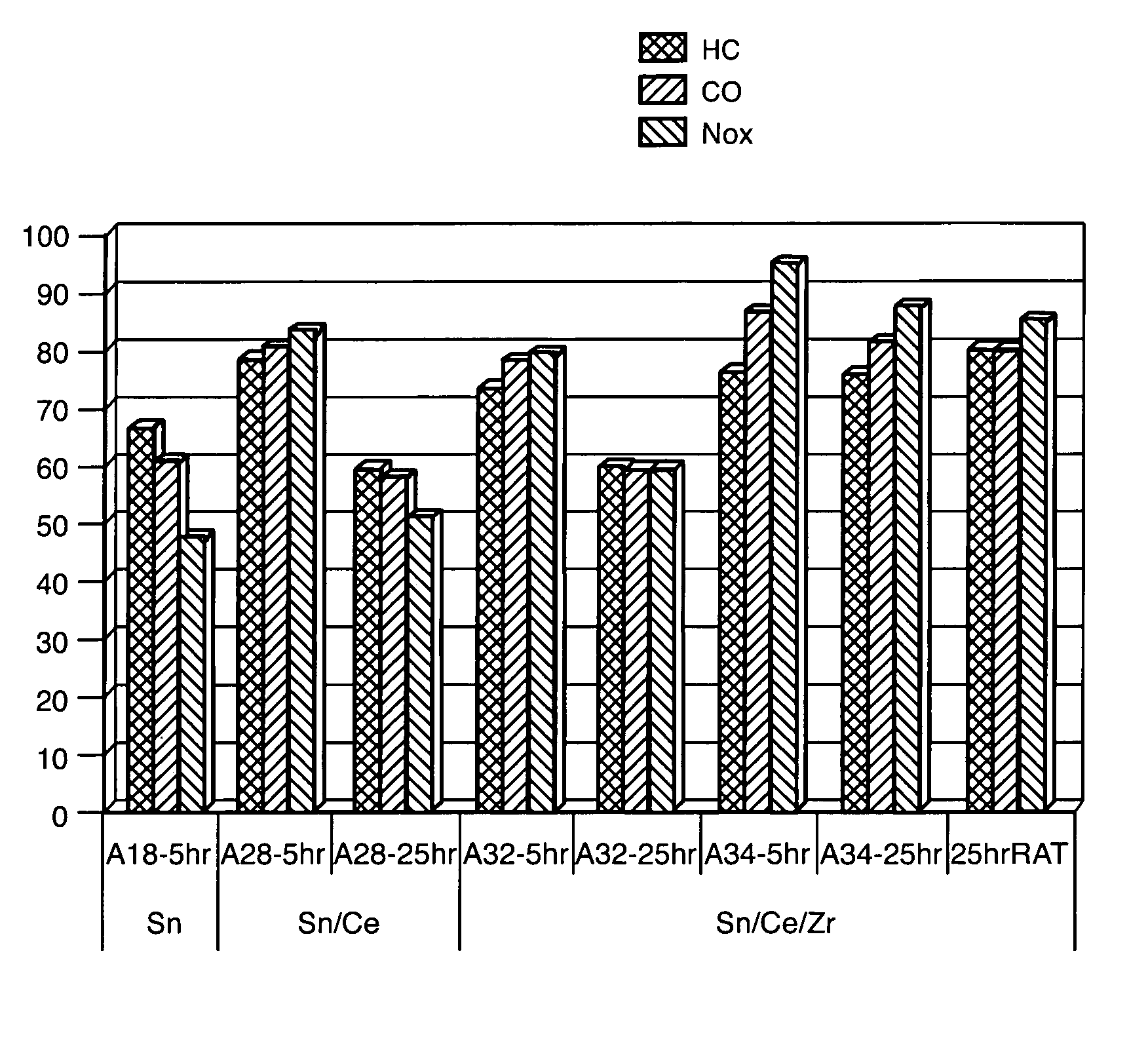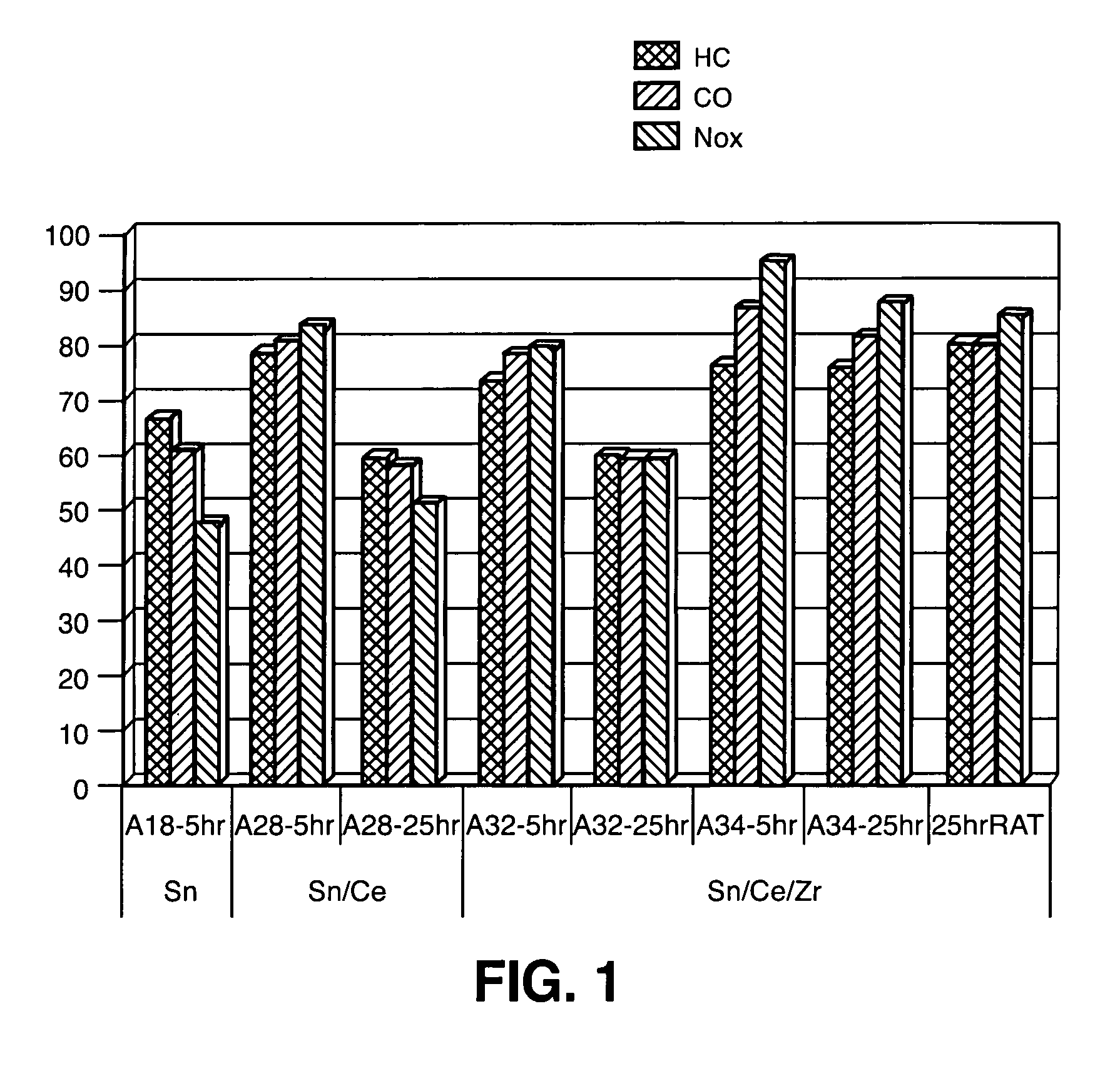Oxidation-reduction catalyst and its process of use
a technology of oxidation reduction catalyst and catalyst, which is applied in the direction of catalyst activation/preparation, metal/metal-oxide/metal-hydroxide catalyst, etc., can solve the problem of scarce commodity of PMs and achieve the effect of cost-effective and enhanced thermal stability of ruthenium
- Summary
- Abstract
- Description
- Claims
- Application Information
AI Technical Summary
Benefits of technology
Problems solved by technology
Method used
Image
Examples
examples
[0017]Catalysts incorporating tin oxide as the only reducible metal oxide coating exhibited poor NOx performance following even brief exposure to stoichiometric, or steady state (SS) accelerated aging conditions as shown in FIG. 1 (A18-5 hr). Addition of ceria served to stabilize the tin oxide system, manifesting in acceptable performance through 5 hours of SS aging but all Sn / Ce prototypes failed to meet pollutant destruction requirements following 25 hours of SS aging. The addition of Zr, however, resulted in the formation of a catalyst that exhibited durability through 25 hours of SS aging at elevated inlet temperature of 850° C., resulting in a catalyst bed temperature of approximately 960° C. Thus, these data provided evidence for a positive synergism between the Ru and Zr that manifested in the catalyst formulation maintaining its NOx destruction capability under elevated temperatures.
[0018]The poor NOx performance results recovered for the Sn-only and Sn / Ce systems provide ev...
PUM
| Property | Measurement | Unit |
|---|---|---|
| temperatures | aaaaa | aaaaa |
| temperatures | aaaaa | aaaaa |
| temperatures | aaaaa | aaaaa |
Abstract
Description
Claims
Application Information
 Login to View More
Login to View More - R&D
- Intellectual Property
- Life Sciences
- Materials
- Tech Scout
- Unparalleled Data Quality
- Higher Quality Content
- 60% Fewer Hallucinations
Browse by: Latest US Patents, China's latest patents, Technical Efficacy Thesaurus, Application Domain, Technology Topic, Popular Technical Reports.
© 2025 PatSnap. All rights reserved.Legal|Privacy policy|Modern Slavery Act Transparency Statement|Sitemap|About US| Contact US: help@patsnap.com



